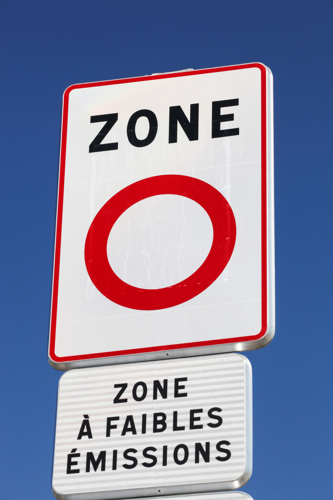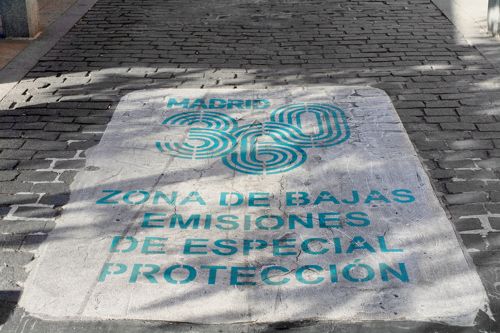How will environmental legislation like ULEZ affect landscapers?
26 Mar Kawasaki Community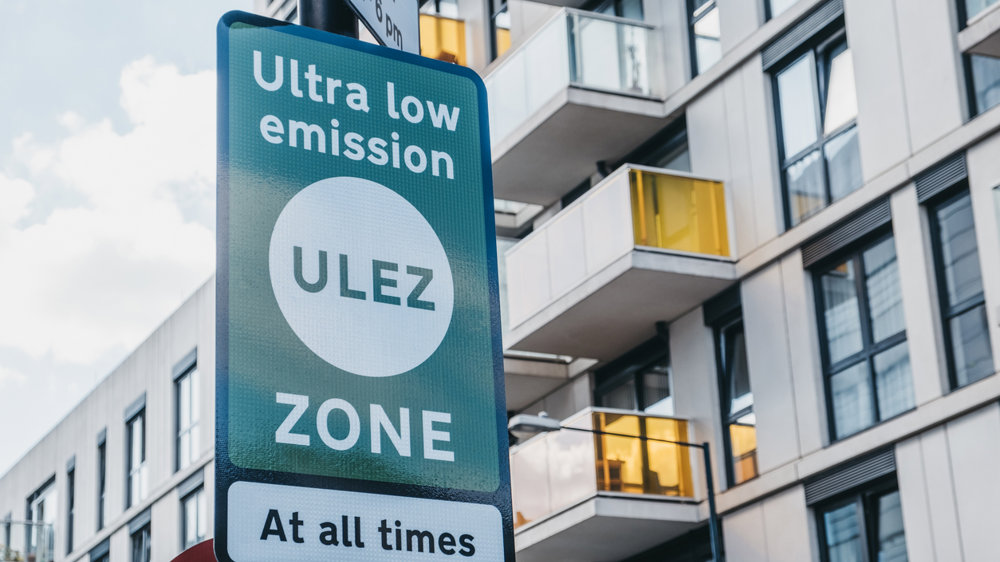
Low Emission Zones (LEZ) are becoming commonplace in major European cities, and, as the UK has seen with the recent Ultra Low Emission Zone (ULEZ) expansion in London, are only set to grow.
What was once confined to the urban sprawl of large city centres is starting to spread outwards, and more people are set to be subject to the regulations. It’s fantastic news in terms of reducing air pollution levels in Europe, and is set to improve the health of countless people. For contractors and self-employed businesses who work in these zones, however, the charges associated with low emission zones can create significant expense – potentially making their work unviable.
Landscapers stand to be affected as much as the next tradesperson – transporting machinery from site to site usually requires a van, pick-up or flatbed truck, and these are typically diesel, which unless relatively new, may not be compliant with low emission zones.
In this article, we explore the current status and future of ULEZ, LEZ and other environmental regulations across Europe, why they’re necessary, how they might impact landscapers, and what you can do to adapt.
LEZ and ULEZ across Europe – is your country leading the way?
Landscape maintenance professionals operating in European cities must grapple with the nuances of LEZ or ULEZ regulations specific to their country. It’s important to be aware of the intricacies of low emission zones even if you’re currently unaffected – they are likely to expand, and you may find your business impacted unexpectedly.
Each country is at a different stage when it comes to low emission zone implementation, but there’s a clear pattern; there’s a push to reduce air pollution across Europe, either by increasing the number of zones or the level of restrictions, or, which is often the case, a combination of both.
We take a closer look at the emission zones in France, Germany, Italy, Spain, Portugal and the UK, and compare their progress.
France
If you’re a landscape maintenance professional working in and around major cities in France, you may encounter Zones à Circulation Restreinte (ZCR). These are primarily found in the biggest cities like Paris, Lyon, and Lille, and impose strict restrictions on vehicle emissions.
There were 14 ZCRs in France as of July 2023, but the country has ambitions to increase this number. The French Senate voted in favour of introducing low emission zones in all areas with more than 150,000 inhabitants. Meeting this target has proven challenging; though the original deadline was 2024, it has been postponed to 2030.
In France, you need to display a Crit'Air vignette, or clean air sticker, declaring the level of emissions produced by your vehicle. For many, the emissions of their vehicle will make a designated ZCR inaccessible, making it impossible to take on any clients in these areas. If you’re found to be in violation of the regulations – which includes not displaying a sticker – you will pay a penalty charge.
Italy
Italy has the most low emission zones in Europe, with hundreds of active Zona Traffico Limitato (ZTL) around the country. They have been leading by example in many respects, as the scale of Italy’s efforts far outstrips the rest of Europe, even if others may be enforcing stricter requirements.
Italy's ZTLs, implemented in cities such as Rome, Milan, and Florence, are similar to France’s ZCRs, but have their own quirks. ZTLs aren’t necessarily always off limits to vehicles that aren’t low emission – there’s usually a traffic light system which lets drivers know if a ZTL is active.
ZTLs may be active 24 hours a day, or only for certain hours of the day, or for a few days of the week, depending on the city and specific zone. When a ZTL is active, only low emission vehicles, or vehicles granted permission may enter the area. If you make the mistake of entering one when the zone is active, you’ll be caught by a camera and penalised.
Germany
Germany has the second highest number of low emission zones in Europe behind Italy – or at least, as you’ll read below, it did until recently. Germany's Umweltzonen, or Low Emission Zones, are, as is typical, scattered across the major cities in the country. There are dozens of these zones in Germany, and though some cities wish to abolish them, it’s still one of the most progressive countries in Europe for tackling traffic-related air pollution.
Like the French system, you need to display a sticker showing the emissions level of your vehicle. There are green, yellow and red stickers, depending on how well your vehicle complies with European standards. In most Umweltzonen, only vehicles with green stickers are allowed, while most diesel vehicles have yellow or red.
Spain
Spain had proven to be slower in its implementation of low emission zones than some other countries in Europe, with only three active zones in 2022. But they have quickly turned from being a country lagging behind to one forging ahead.
The Climate Change Act, approved by the Spanish Congress, established that municipalities with more than 50,000 inhabitants had to implement a low emission zone by 2023. This included a huge swathe of towns and cities in the country, and is set to increase the number of zones to 149 by 2025, second to only Italy with 172.
Exact restrictions change depending on the city and zone you’re in, so it’s worth reading up on the local regulations to be certain. Generally, compliance involves meeting Euro 6 emission standards, but this is likely to get stricter with time. Like in many other European countries, you must display a sticker declaring your emissions standard or face a fine.
Portugal
Low emission zones in Portugal are known as Zonas de Emissões Reduzidas (ZER). There is only one strictly low emission zone in Portugal at present, in the capital, Lisbon. Outside of Lisbon, there are several limited traffic zones – notably in Porto, the second largest city.
There are different levels to the zones in Lisbon – the very centre of the city has stricter restrictions, while the wider zone has fewer. Even here, however, many vehicles are likely to be non-compliant, making working in these areas extremely difficult to navigate.
Of the countries discussed here, Portugal is the furthest behind in tackling traffic-related air pollution and it hasn’t gone unnoticed. The EU took legal action over Portugal’s failure to tackle air pollution with a judgement reached against the country in June 2023. To meet the commitments that member states in the EU are subject to, Portugal will have to implement more stringent regulations and increase its number of low emission zones.
United Kingdom
The UK has set the pace when it comes to ULEZ (a stricter version of the regular low emission zones common in Europe) implementation. London has strict emission standards which cover a huge area – with the recent expansion, it has moved firmly into suburban territory, and is directly affecting landscapers who live in and around the zone.
While there are various clean air zones in the UK, in Oxford, the concept is taken one step further; the council has implemented a zero emission zone (ZEZ) in the city centre, where only fully electric vehicles are allowed to enter free of charge. It may be the first ZEZ in the UK, but it won’t be the last. They’re on the rise across Europe – 35 ZEZs are confirmed as being introduced by 2030, including sections of cities such as London, Paris and Berlin.
The UK’s ultra low emission zone is one of the largest and strictest, but this is likely to become the norm. It’s leading the way in many respects, but other countries in Europe are likely to soon follow suit.
Euro emission standards
Low emission zone policies often refer to Euro emission standards, such as Euro 6, which is usually the minimum requirement for diesel vehicles in low emission zones. Most diesel engines made since 2016 are Euro 6 compliant, so if your van or truck is more modern, it’s more likely to comply with emissions regulations and not be subject to charges.
Why are low emission zones important?
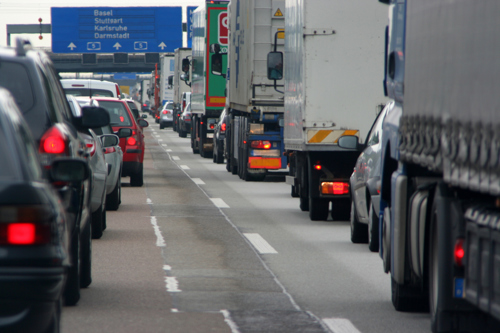
It’s easy to be frustrated with the challenges that low emission zones present for your business, but it’s important to remember why they’re so necessary.
Reducing the number of heavily polluting vehicles is essential to improving public health. It’s not just the environment that is impacted by excessive road pollution – it’s people. The European Environment Agency estimates that chronic exposure to air pollution resulted in 238,000 premature deaths in 27 EU member states in 2020. Reducing toxic air pollution levels is critical to reducing these figures. It’s already working – in 2019, the number was 307,000.
Low emission zones improve people’s health; a German study found that LEZ reduces the number of patients with cardiovascular disease by two to three percent. Finding a solution to the business challenges LEZ and ULEZ present is a small price to pay for such results.
What is the future of low emission zones in Europe?
As discussed earlier, each country has their own targets and ambitions regarding low emission zones. But the general trajectory is that they’re going to get stricter, and more common.
According to a report from the Clean Cities Campaign, the number of low emission zones is set to rise rapidly over the next few years, and restrictions will increase. Low emission zones are likely to develop into ultra low emission zones, which in turn may become zero emission zones. It’s certainly not likely to slow down; as the report suggests, “low- and zero-emission zones are being promoted at all political levels in Europe”.
The 2021 Climate Change Act in Spain is a great example of how quickly things can change. In the space of only a few years, Spain will go from a country with very few LEZ – one of the lowest in Europe – to the second-highest; set to reach 149 by 2025. As governments push for more of these zones to meet clean air targets, more and more people and businesses will need to adjust to them.
What it means for your landscaping equipment

Will LEZ, ULEZ or even ZEZ have an impact on your equipment? It’s important to check the restrictions in your local area, as rules differ across zones and countries to be sure. But while we can’t predict the future, the answer – in London, as an example, for now at least – is no.
Engines for landscaping equipment aren’t large enough to register as relevant to low emission zones. In the UK, non-road mobile machinery (NRMM), which covers landscaping equipment, is subject to regulations – but restrictions only apply to the largest equipment. Typically, this will be machinery in the construction or agricultural industries; the power rating has to be above 37kW.
NRMM aren’t going completely under the radar when it comes to regulations, but the likes of ride-on mowers are not currently considered when it comes to restrictions.
How can you prepare your business for environmental legislation?
Is your vehicle compliant with ULEZ, LEZ or ZEZ?
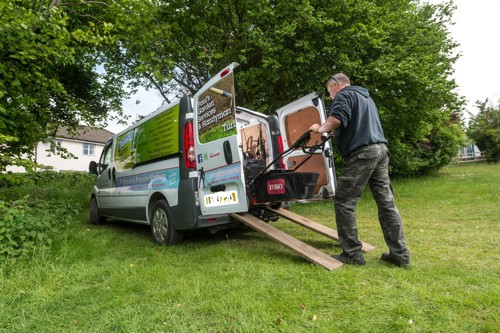
You can’t do your job without equipment, and you won’t get very far without a vehicle. Transporting larger equipment like a ride-on mower makes a bigger vehicle a necessity – and, unfortunately, most older vans and trucks aren’t compliant with low emission zones.
If you’re living in or close to one of these zones, you need to be certain of the status of your vehicle. If it isn’t compliant, there are steps you can take to find a solution.
There are several options available to landscape professionals, so don’t panic just yet. Retrofitting your van or truck is one, and may be more cost-effective than purchasing a new vehicle altogether.
To help you decide, we’ve taken a closer look at the different vehicles available to landscapers:
- Petrol vehicles – petrol vehicles typically have lower emissions than their diesel counterparts, making them a more favourable choice in low emission zones. However, it's essential to make sure that your petrol vehicle meets the specific emission standards set by LEZ regulations in your local area.
- Diesel vehicles – older diesel vehicles are often subject to stricter regulations due to higher emissions. Compliance may involve upgrading to newer models that meet the required emission standards (such as Euro 6) or retrofitting with emission-reducing technologies.
- Electric vehicles – electric vans and trucks, being zero-emission vehicles, are generally exempt from LEZ or ULEZ charges and restrictions. LEZ or ULEZ policies often encourage the adoption of electric vehicles, and incentives may be available to promote their use.
- Hybrid vehicles – hybrid vans or trucks, combining an internal combustion engine with an electric motor, will have lower emissions than traditional vehicles. LEZ or ULEZ regulations may provide advantages or exemptions for certain types of hybrid vehicles, especially if they meet specific emission criteria.
- Alternative fuel vehicles – vehicles powered by alternative fuels like compressed natural gas (CNG) or liquefied petroleum gas (LPG) may be considered more environmentally friendly. For diesel vehicles, another alternate fuel is hydrotreated vegetable oil (HVO).
Careful route planning and scheduling
In some countries and cities, low emission zones are only a few days a week or at certain times – coordinating your work so that you only work with clients in these zones when inactive will take some planning, but is a simple solution to the problem.
For landscapers with clients in London (but don’t live in the zone themselves), careful logistical planning can make the ULEZ charge a negligible expense. While you’re finding a more permanent solution like a vehicle retrofit – or turning your focus elsewhere in the country – maximising your efficiency in a day can help. If you can, schedule all your work within ULEZ for a single day and meticulously plan your route so that you can pack as much in as possible. You’ll still pay a charge, but it won’t be spread across the week.
Financial planning and incentives
In some regions, governments offer incentives for transitioning to low emission vehicles, providing an opportunity for landscape maintenance businesses to offset costs. It’s worth checking for any schemes available to you – it could save your business thousands in the long run.
Preparing your business for environmental legislation
An increase in low emission zones and environmental policies is a trend across Europe. They do introduce challenges for European landscapers, but as we’ve discussed, none that are insurmountable – and the pay-off of improved public health is more than worth it.
By understanding and adapting to the specific regulations in their country, investing in eco-friendly vehicles and embracing sustainable practices, lawn care professionals can navigate these challenges and future-proof their business against further legislation.
Do you have any thoughts on environmental legislation like ULEZ, LEZ or ZEZ and how it might affect your business? Share your stance with us on our social media channels.
You may be interested in
-
Congratulations to Richard Willis, our latest brushcutter prize winner!

-
Help us shape our support for professional landscapers – take our survey today!

-
Kawasaki Engines parts and technical manager Jon Couling discusses the support network that keeps landscapers working year-round

-
Powered by Kawasaki: Introduction to Husqvarna

-
Kawasaki Engines Christmas Quiz

-
Iwan Jones joins the ranks of Kawasaki prizewinners winning a brand new multi-tool


